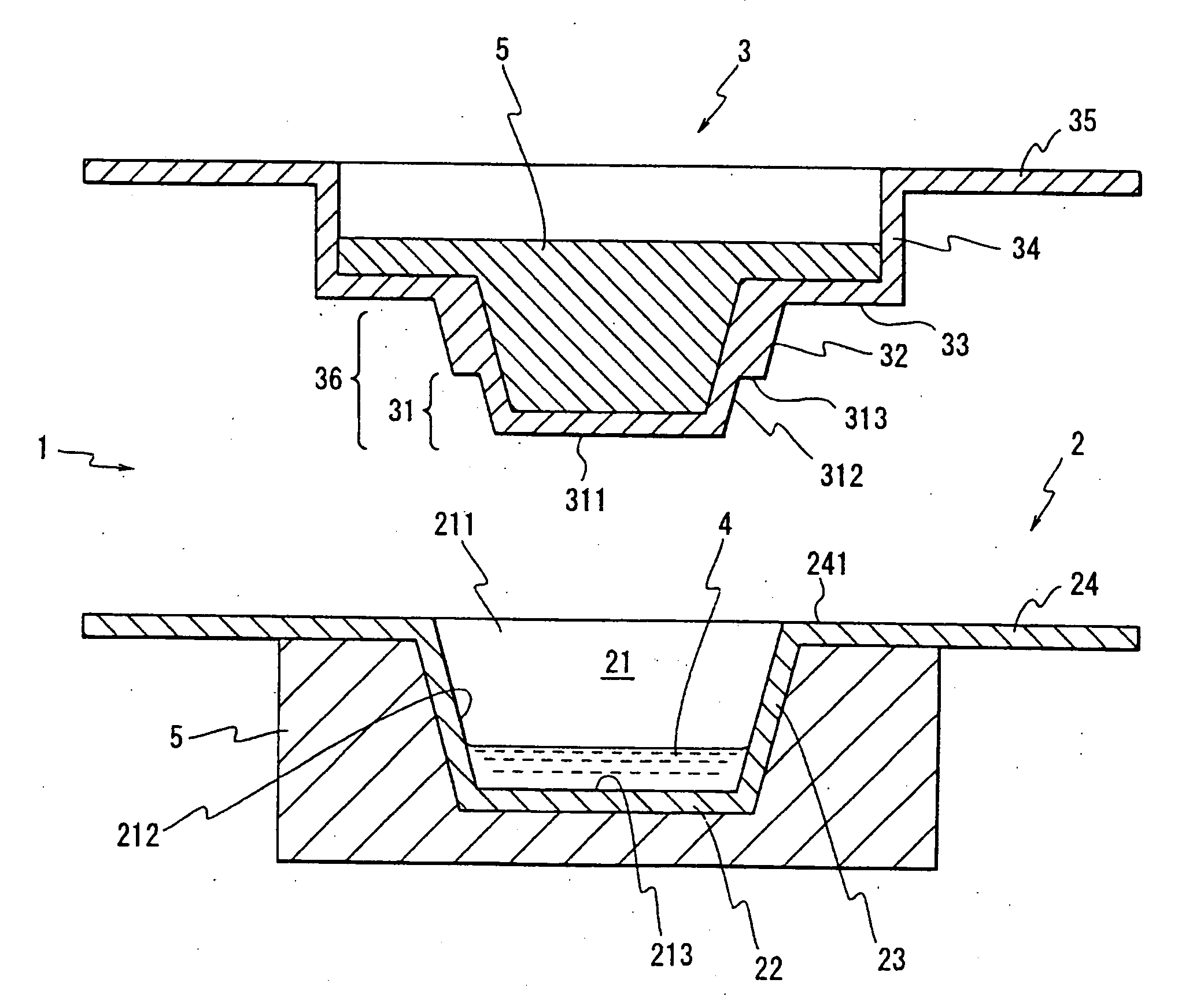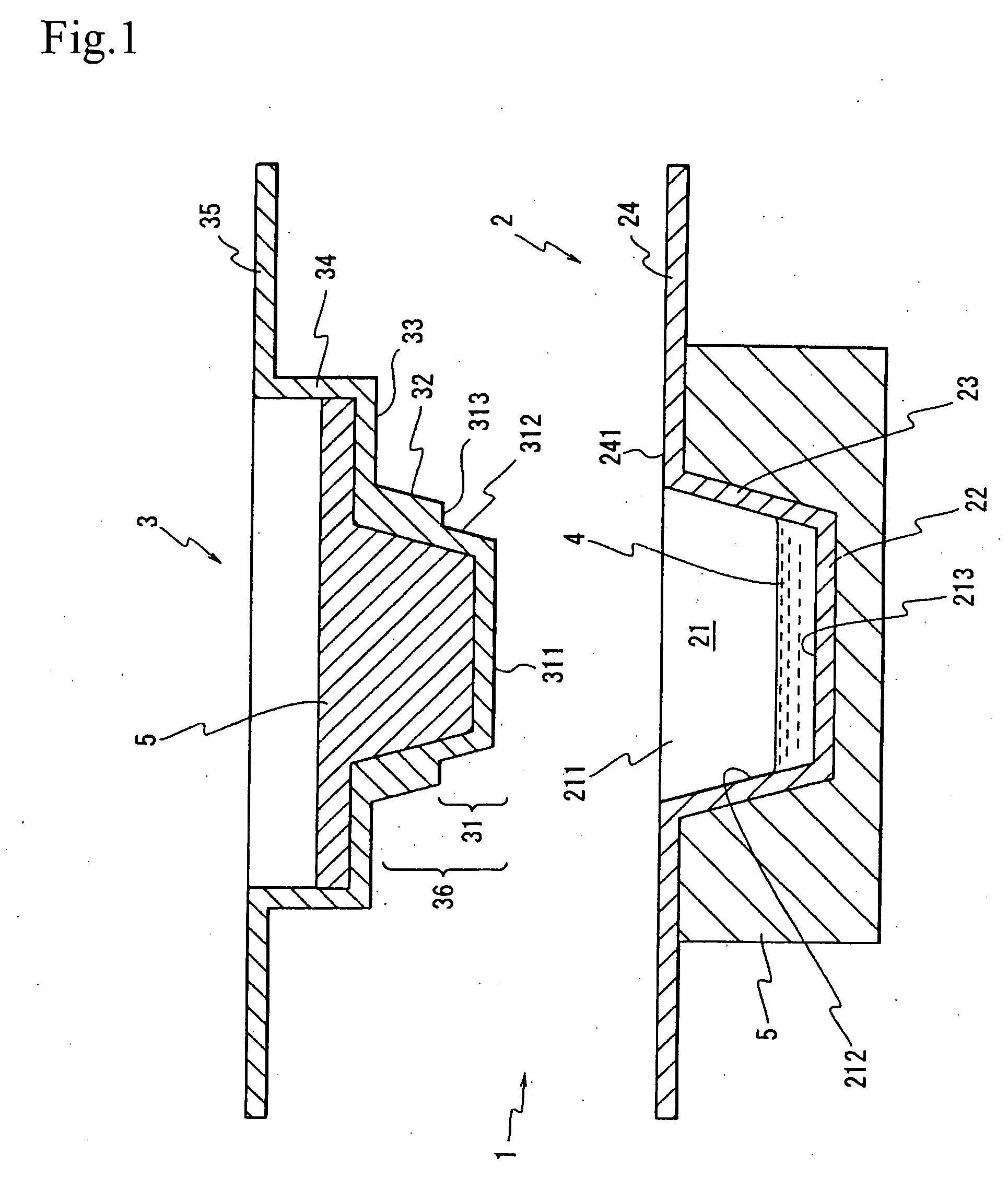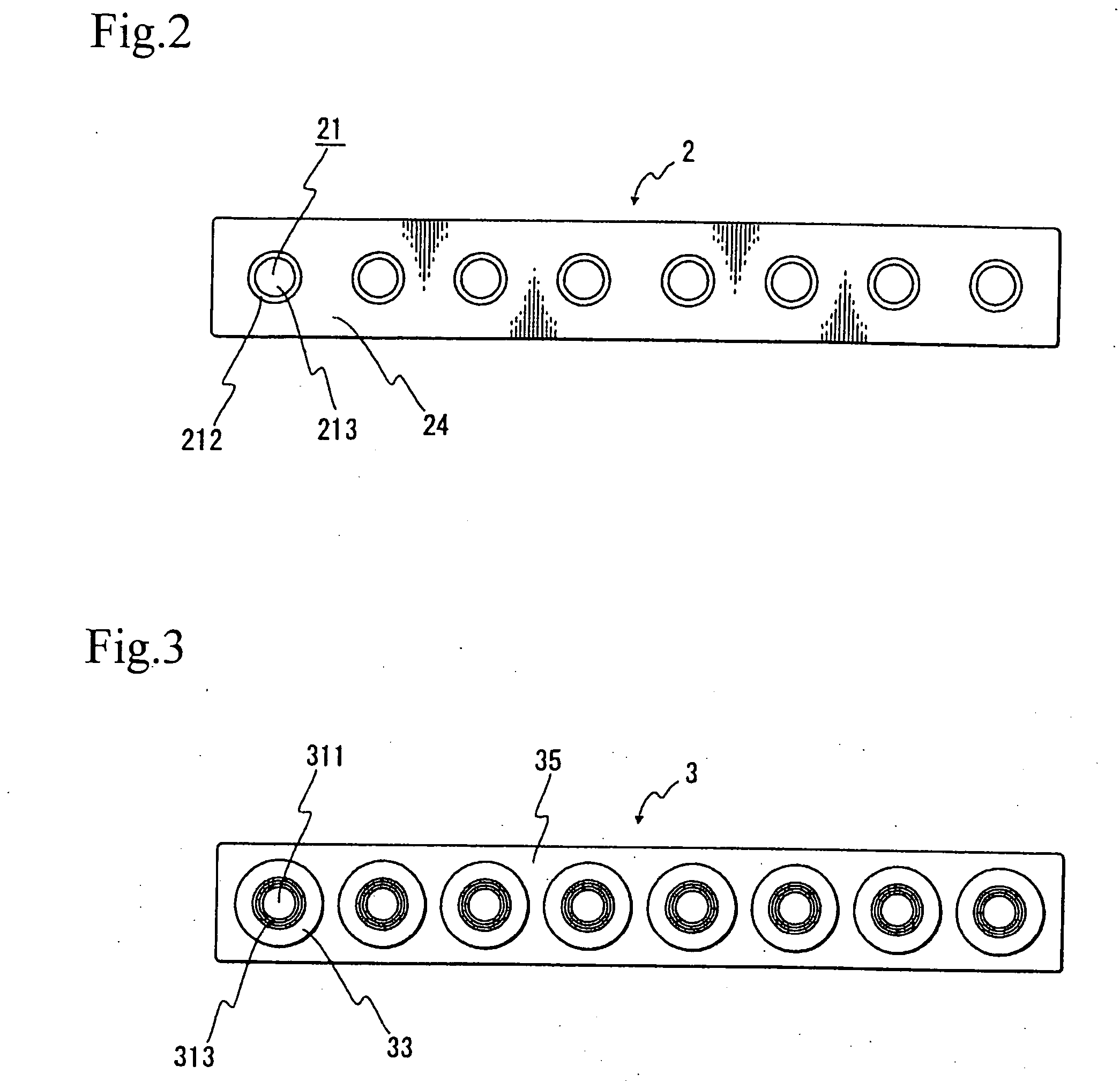Reaction vessel, reaction apparatus and reaction solution temperature control method
a technology of reaction apparatus and temperature control method, which is applied in the field of reaction apparatus and reaction solution temperature control method, can solve the problems of drop in the amplification efficiency of pcr, and it is difficult to utilize a pcr reaction apparatus comprising a micro-capillary as a pcr reaction vessel, so as to achieve efficient, control the temperature of the reaction solution more quickly, and achieve efficient
- Summary
- Abstract
- Description
- Claims
- Application Information
AI Technical Summary
Benefits of technology
Problems solved by technology
Method used
Image
Examples
Embodiment Construction
[0061] Below, embodiments of the reaction vessel of the present invention will be described with reference to the attached figures.
[0062]FIG. 1 is a sectional view showing one embodiment of the reaction vessel of the present invention.
[0063] As is shown in FIG. 1, the reaction vessel 1 of the present embodiment comprises a reaction vessel main body 2, a cover member 3, and a heat-conducting metal block 5.
[0064]FIG. 2 is a plan view of the reaction vessel main body 2 in the present embodiment, and FIG. 3 is a bottom view of the cover member 3 in the present embodiment.
[0065] As is shown in FIGS. 1 and 2, the reaction vessel main body 2 is constructed from a circular bottom plate part 22, a tubular part 23 which is installed in an upright position so that this tubular part 23 gradually increases in diameter in the upward direction from the circumferential edge of the bottom plate part 22, and a flat-plate part 24 which is disposed on the upper end of the tubular part 23.
[0066] As...
PUM
| Property | Measurement | Unit |
|---|---|---|
| temperature | aaaaa | aaaaa |
| temperature | aaaaa | aaaaa |
| temperature | aaaaa | aaaaa |
Abstract
Description
Claims
Application Information
 Login to View More
Login to View More - R&D
- Intellectual Property
- Life Sciences
- Materials
- Tech Scout
- Unparalleled Data Quality
- Higher Quality Content
- 60% Fewer Hallucinations
Browse by: Latest US Patents, China's latest patents, Technical Efficacy Thesaurus, Application Domain, Technology Topic, Popular Technical Reports.
© 2025 PatSnap. All rights reserved.Legal|Privacy policy|Modern Slavery Act Transparency Statement|Sitemap|About US| Contact US: help@patsnap.com



